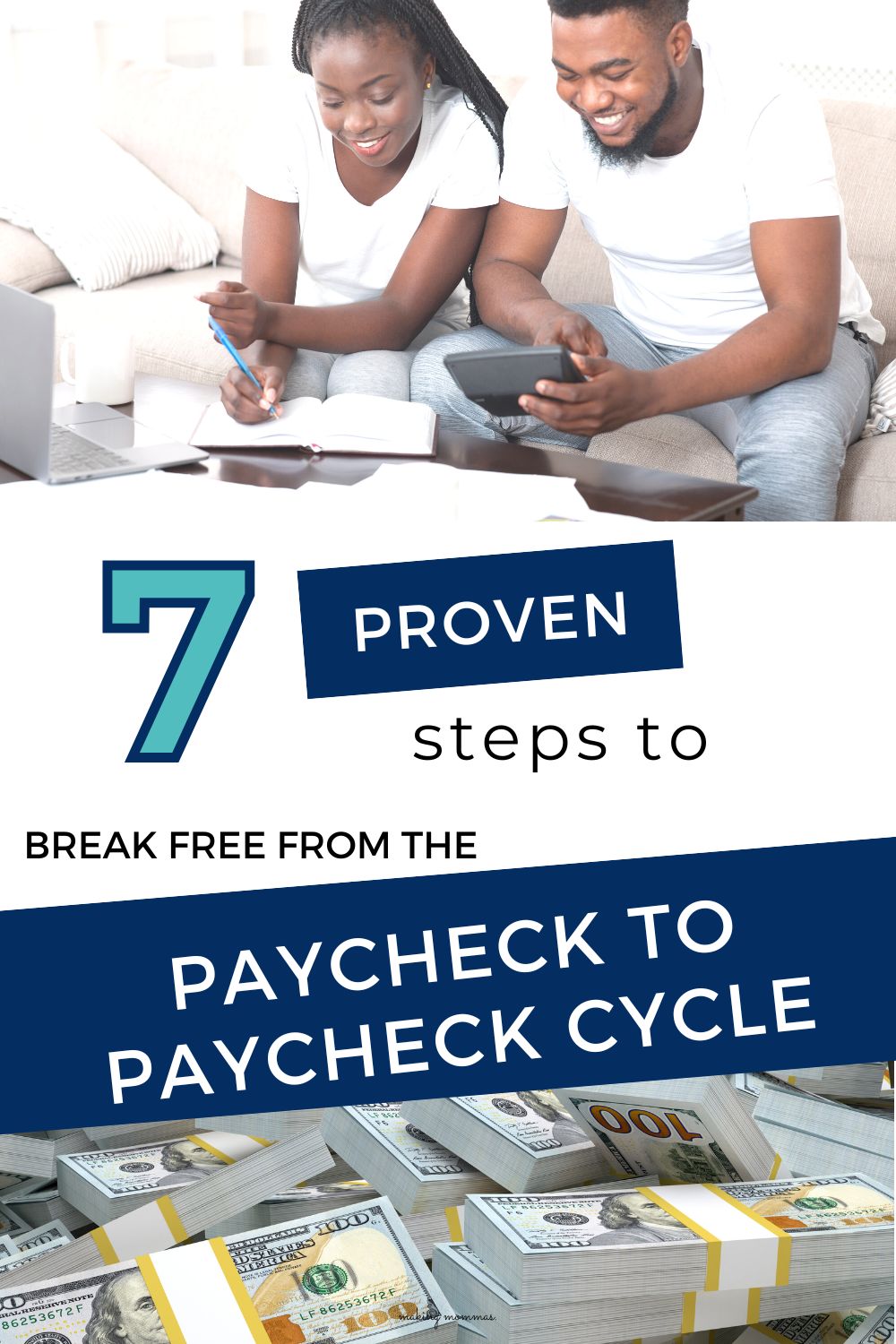In this article:
Toggle- How to Stop Living Paycheck to Paycheck
- 1. Create a Budget
- 2. Cut Expenses
- 3. Track Your Expenses
- 4. Save Money
- 5. Learn Better Money Management Skills
- 6. Become Obsessed with It {make it the life change you want the most}
- 7. Make More Money
- Managing Money FAQs
- At the End of the day…
- Before You Go!
- More Money Tips for Sahms
Here’s how to break out of the paycheck to paycheck cycle, even if you have tons of debt and are barely surviving on one income!

Hey momma! Let’s talk about something many of us can relate to – living paycheck to paycheck.
It’s a struggle, right? Trying to make ends meet, dealing with unexpected expenses, and feeling stuck in a never-ending cycle of financial stress.
But guess what? You’re not alone!
According to a survey by the American Payroll Association, a whopping 74% of Americans are in the same boat. But here’s the good news – there’s hope!
Trust me, I’ve been there too. Burdened with debt and barely making it through each month.
But I found a way out and it transformed my life. And now, I’m here to share my secrets with you!
Let’s dive in and discover actionable steps that can lead you to a better life. Together, we got this momma!
How to Stop Living Paycheck to Paycheck

I know you’re probably in a rush, so here’s a summary of the key tips I’m going to share, to break free from living paycheck to paycheck:
Acknowledge the Situation: Recognize and accept your financial situation. It’s the first step towards change.
Budgeting is Your Best Friend: Create a realistic budget and stick to it. It’s a powerful tool that gives you control of your money.
Start an Emergency Fund: Small savings can add up over time and provide a financial safety net for unexpected expenses.
Attack the Debt: Prioritize paying off your debts. Consider strategies such as the debt snowball method or a debt avalanche.
Find Ways to Make Extra Money: Look for ways to make a little extra money. It could be a part-time job, a temporary job, freelancing, or even selling unused items.
Learn to Say No: It’s important to distinguish between wants and needs. Learn to say no to unnecessary expenses.
Remember, breaking out of the paycheck to paycheck cycle is possible. It requires determination, discipline, and a little bit of budgeting savvy.
But you’ve got this, momma!
Before we continue, though, I want to let you know that I am an affiliate for Amazon. This means that I may earn a small commission if you make a purchase using my referral links, at no extra cost to you.
It’s a win-win situation! You get to buy products you love, and I get a little support for my work. Remember, I only recommend products that I personally use and trust.
You can find more information in my disclosure policy. Thank you for your support!
1. Create a Budget

Budgeting is literally the first step to gaining financial freedom. It’s about more than just tracking your income and expenses, though, momma.
It’s a strategic plan that helps you make the most out of every dollar you earn. By creating a budget, you gain control of your financial life and make your money work for you.
Here is a simple step-by-step guide to creating a budget:

Identify your income: Tally up all your sources of monthly income. This could be your salary, any side jobs, passive income, etc.
Track your expenses: Keep a record of all your expenses, categorizing them into fixed (rent, utilities, auto loan, insurance premiums, etc.) and variable (eating out, entertainment, etc.).
Set financial goals: These could be long-term (saving for retirement, down payment on a house) or short-term (vacation, emergency fund).
Develop a plan: Allocate portions of your income to different expense categories while ensuring you’re still setting aside money for your goals.
Monitor and adjust: Regularly review your budget and make necessary adjustments to stay on track.
When to Use a Crisis Budget

Sometimes, however, a standard budget might not suffice, particularly during a financial crisis, such as a job loss or a “global pandemic”. 🫣 Or when you can’t even make it paycheck to paycheck.
This is where a crisis budget comes in.
A crisis budget is a bare-bones budget that covers only the most essential expenses, like food, housing, utilities, credit card payments, car loan, etc.
A crisis budget is meant to be a temporary thing. The goal is to help you survive during a financially challenging period and prevent you from sinking deeper into credit card debt.
Creating a crisis budget involves:

Identify essential expenses: Determine what you absolutely need to pay for, such as housing, car insurance, utilities, etc. Food is a necessity, but cut out junk food and buy only what is absolutely necessary.
Eliminate non-essential expenses: Temporarily cut out non-essentials like entertainment or dining out.
Use emergency funds: If you have an emergency fund, this is the time to use it. It can help cover your essential expenses without having to rely on a credit card.
Seek additional income or assistance: Look into part-time jobs, freelance work, or financial assistance programs if necessary.
Review and adjust regularly: A crisis budget is usually temporary, so review and adjust it regularly based on changes in your situation.
Living on a crisis budget indefinitely? Not a recipe for happiness!
Trust me, I’ve been there. 🙈
Besides the financial strain, there’s the psychological impact. Feeling deprived and resentful towards budgeting.
Budgeting becomes the bad guy!
Sometimes, we all get pent-up resentment and go on a “binge spending” spree! Splurging on non-essential items, throwing our budget out the window, potentially landing in more debt.
Yikes! Here’s the deal: while a crisis budget is helpful during emergencies, once your situation stabilizes, reintegrate controlled non-essential spending.
Maintain a financially sustainable and psychologically healthy lifestyle. Let’s get that budget back on track, shall we? 💪💸
Remember, managing your money, especially during a crisis, requires being proactive, realistic, and adaptable with your budget.
2. Cut Expenses
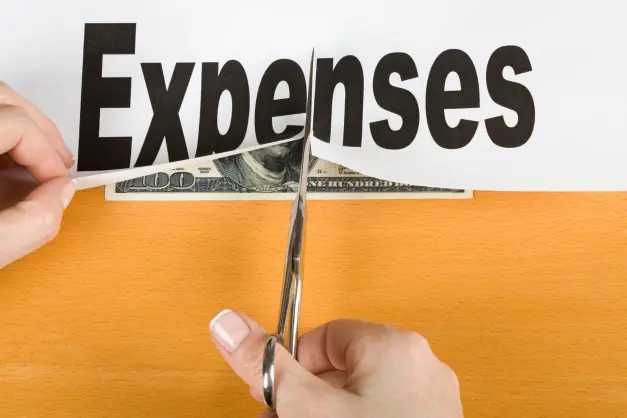
Cutting expenses is a super important part of managing your finances, trust me! Not only does it help you get through tough times, but it also speeds up the achievement of your long-term money goals.
The less you spend, the more you save, which means more financial security and peace of mind. It’s like the secret sauce to living within your means – spending less than what you earn.
This genius strategy lets you save a big chunk of your income that can be used for emergencies or invested for future growth. So, let’s get savvy with spending money, to watch our money grow! 💰💪
There are several effective ways to cut expenses and begin saving:

Prioritize Needs Over Wants: Learn to distinguish between needs (the essentials) and wants (luxuries or non-essentials). Prioritize your needs and limit your wants.
Shop Smart: Look for discounts, sales, or cheaper alternatives. Avoid impulse purchases by making a shopping list and sticking to it.
Avoid Debt: Try to avoid unnecessary debt. High credit card interest rates can lead to increased expenses.
Save on Utilities: Conserve energy and water to save on utility bills.
Cook at Home: Eating out frequently can add up. Try to cook at home more often.
Remember, the goal is not to deprive yourself, but to find a balance between living comfortably and spending wisely.
3. Track Your Expenses

Keeping track of your expenses is a super important step to stopping the paycheck to paycheck cycle! It’s like having a money GPS, guiding you to understand where your hard-earned cash is going, giving you insights into your spending habits, and helping you make smarter financial decisions.
Plus, it’s a great way to spot any unnecessary spending, find areas where you can save some bucks, and make sure you stick to your budget.
But hey, don’t worry! Keeping tabs on your expenses doesn’t have to be rocket science.
Here are some simple yet effective ways to get it done:

Use a Budgeting App: There are numerous budgeting apps available that can connect to your bank account, track your income and expenses, and categorize your spending for you.
Excel or Google Sheets: If you’re comfortable with spreadsheets, they can be a powerful tool for tracking expenses. I use this one to track my expenses. I know it’s for businesses, but I customized it to fit my personal needs.
Receipts and Physical Records: If you’re more of a traditionalist, collecting receipts and maintaining a physical record can work too. At the end of each week, review your receipts and note your expenses accordingly in a ledger. You can find many options on Amazon.
Remember, the goal here is not to make you feel guilty about every penny you spend, but rather to inform you of your financial habits so you can make conscious decisions and achieve your money goals.
4. Save Money

Saving money is more than just a good financial habit; it’s a lifeline that can provide you with a sense of financial security and independence. Having a savings allows you to be prepared for unexpected expenses, reduces financial stress, and provides the means to realize your financial goals.
There are two types of savings accounts you should consider:
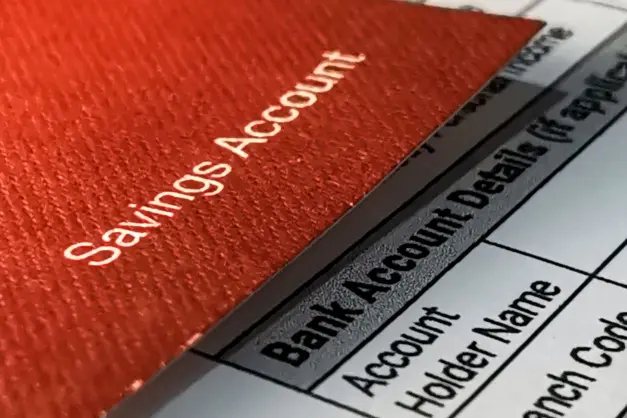
Emergency Savings: This is a safety net that should ideally cover 3 to 6 months’ worth of living expenses. In a pinch, this fund can cover sudden or unexpected costs such as job loss, medical bills, or urgent home and car repairs.
Put and Take Account: This account is for your short-term goals or as a holding place for money you’ll need in the near future. Maybe you’re planning a vacation or looking to purchase a new gadget. The put and take account allows you to save for these goals without depleting your emergency savings.
To start saving, begin by drawing up a monthly budget and include a line item for savings. Next, try to cut back on non-essential spending and automate your savings.
Remember, no amount is too little to save. Consistency is key, and over time your savings will grow.
It’s never too early – or too late – to start saving!
5. Learn Better Money Management Skills

Learning how to manage your money better is super important! It gives you the power to take control of your financial life.
Plus, it can help you achieve stability, reduce money stress, and work towards that sweet financial freedom.
To level up your money skills, start by educating yourself on the basics. Budgeting, investing, and saving money – get to know ’em! There are tons of free resources online, plus books and courses that can help you out.
Books

“Rich Dad Poor Dad” by Robert Kiyosaki: This book teaches about financial independence and building wealth through investments, real estate, and owning businesses.
“The Total Money Makeover” by Dave Ramsey: It offers practical advice for living debt free and shaping up your finances.
“Your Money or Your Life” by Vicki Robin and Joe Dominguez: This one provides a step-by-step guide to achieving financial independence.
Courses

“Personal Finance” offered by Purdue University on edX: This course covers all the basics of personal finance from budgeting to investing.
“Financial Planning for Young Adults” offered by Illinois University via Coursera: This course is specifically geared towards young adults, covering debt, budgeting, investments, retirement planning and more.
“Managing Your Personal Finances” on Alison: This course includes lessons on credit cards, taxes, insurance and retirement planning.
And hey, don’t be afraid to ask for professional advice. Financial advisors can help you plan for the future, make wise investments, and navigate tricky financial situations.
Remember, getting better at money management is a journey. It’s not about making perfect decisions right away, but about making little improvements over time.
You got this! Keep learning, keep growing, and watch your finances thrive.
6. Become Obsessed with It {make it the life change you want the most}

Managing your money better is super important! Financial health forms the foundation for so many aspects of our lives, like education, healthcare, and retirement plans.
The more effectively you handle your finances, the more secure and comfy your future becomes. But hey, being obsessed with your financial health doesn’t mean being a total bore!
It just means being on top of your income, expenses, savings, and investments. Take the time to understand the financial ins and outs, so you can make smart choices.
To stay focused, think about your long-term goals and create a financial roadmap to reach ’em. And don’t forget to check in on your financial plan regularly, adjusting as needed.
7. Make More Money

Making more money can improve your quality of life, broaden your horizons, and help you to end that paycheck to paycheck cycle. It’s all about getting closer to your goals, whether it’s buying a house, saving for your kiddo’s education, or planning for an early retirement.
Hey, mommas, there are plenty of ways to earn extra cash without compromising your responsibilities at home.
If you’re a whiz in a particular subject, why not offer online tutoring? And if you’ve got a knack for writing, starting a blog about your experiences can be a fun way to make some extra moolah.
You can also consider selling handmade goodies online, offering childcare services, or becoming a virtual assistant.
The possibilities are endless!

But hey, dads, you’re not left out either! If you’re looking to make more money, why not ask for a raise? If that doesn’t fly, consider acquiring new skills or credentials that make you an asset to your employer, or even open up new career paths.
And for some extra dough, you can turn your hobbies like woodworking or photography into a profitable side hustle.
Remember, making some extra cash requires creativity, resourcefulness, and perseverance. But it’s also important to plan and be disciplined.
As the saying goes, “It’s not about how much money you make, but how much you keep, how hard it works for you, and how many generations you keep it for.” Wise words indeed! 💪💰
Managing Money FAQs

Alrighty, now that we’ve covered some super important tips about making and managing money, you might still have a few burning questions. No worries, momma!
Let’s dive into some of the most frequently asked questions about managing your finances, to clear up any lingering doubts.
What does living paycheck to paycheck mean?

Living paycheck to paycheck means that an individual or family primarily relies on their current income to cover their living expenses, with little to no savings set aside for emergencies, future goals, or retirement. This financial situation often leaves them vulnerable to unexpected expenses and escalating debt payments.
The paycheck to paycheck life can be challenging to break, but with careful budgeting, disciplined spending, and a potential increase in income, it’s certainly possible to achieve financial stability and freedom.
Is living paycheck to paycheck normal?

While it’s unfortunately common, living paycheck to paycheck isn’t an ideal financial situation. According to a survey by CareerBuilder, a staggering 78% of U.S workers live paycheck to paycheck to make ends meet.
Economic factors, wage stagnation, health insurance, and lifestyle choices can contribute to this circumstance. However, with sound financial habits, it is possible to stop living paycheck to paycheck and create a comfortable financial cushion.
It’s important to remember that it may take time, patience, and discipline to achieve this financial independence.
What causes people to live paycheck to paycheck?
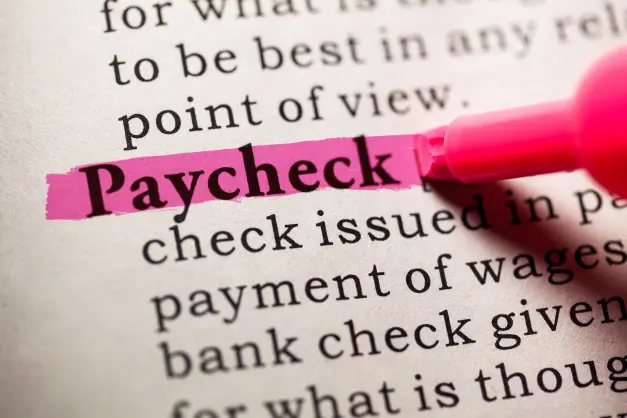
Living paycheck to paycheck is no fun, trust me, I’ve been there! There are so many factors that contribute to this struggle.
From low income to crazy high living costs, unexpected expenses, debt, and even poor financial decisions, it’s like a perfect storm! 😱 And let’s not forget about the lack of financial literacy!
It’s tough to budget effectively and understand how to save and invest when you don’t have the know-how. Life can throw curve balls too, like losing a job or dealing with a medical emergency.
Talk about stress! 😫
Here’s the thing, though, it can happen to anyone, regardless of how much they make. Sometimes we just fall into the trap of lifestyle inflation or make questionable money choices.
Is living paycheck to paycheck bad?

Living paycheck to paycheck can be a bit dicey and stressful, as it leaves zero wiggle room for unexpected expenses or financial emergencies. Like, seriously, who needs that kind of stress?
Without a cushion of savings, you might find yourself relying on credit cards or loans when unexpected costs pop up. And you know what that means? Hello, escalating credit card debt again!
Not exactly the best way to save up for long-term goals, like buying a house or planning for retirement.
So, while it might work in the short-term, it’s definitely not a sustainable or healthy financial strategy in the long run.
How do I stop living paycheck to paycheck with debt?

To get ahead financially when you are weighed down with debt can be tricky. It’s crucial to create a realistic budget and stick to it.
Start by tracking your income and expenses to understand where your money is going. Once you’ve done that, categorize your spending and look for areas where you can stop spending as much.
Allocate a portion of your income towards paying down your debt each month, aiming to pay off your credit cards with the highest interest rate first. The easiest way to do this is to make more than the minimum payment every month.
It’s also essential to build an emergency savings to provide a safety net for unexpected expenses, helping to avoid further debt.
In addition, improving financial literacy through resources and educational materials can provide the knowledge needed to make informed financial decisions.
Lastly, consider seeking advice from a financial advisor or credit counselor to help navigate your financial journey.
What is the 70 20 10 rule for money?

The 70-20-10 rule is a simple yet effective budgeting technique for managing money.
Under this rule, 70% of your income goes towards living expenses – these include rent or mortgage payments, utilities, car payments, groceries, and other necessities.
The next 20% is allocated towards saving or investing, which could involve putting money into a savings account, retirement fund, or investment portfolio.
Finally, the last 10% is meant for personal use or ‘fun’ money, which can be spent on leisure activities, hobbies, or personal items.
This rule promotes a balanced approach to managing finances, ensuring that you meet your essential needs, save for the future, and also enjoy the present.
How do people survive living paycheck to paycheck?
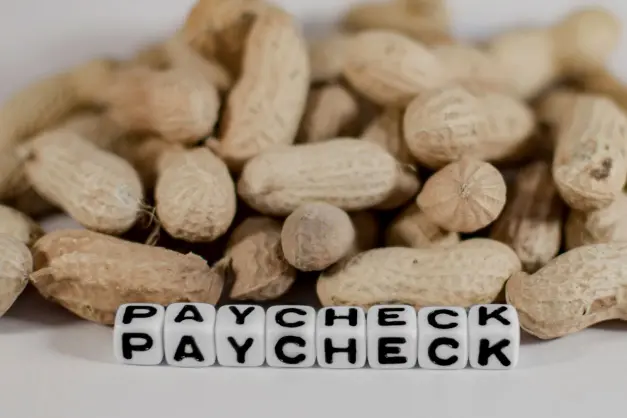
Living paycheck to paycheck can be quite a challenge, but hey, many of us manage it by meticulously planning our expenses and cutting back on non-essential stuff. Budgeting becomes our trusty sidekick, where every dollar we earn has a mission!
We prioritize the essentials like rent, groceries, utilities, and transportation, and let go of the luxuries and spontaneous splurges. Oh, and we even find creative ways to earn more income through the gig economy or work from home jobs.
And, hey, discount vouchers, sales, and second-hand stores? They’re our secret weapons to stretch that hard-earned cash even further!
It’s not an easy way to live, I tell ya, but it keeps us on top of our finances while we work towards a brighter future.
How to avoid living paycheck to paycheck?

It all starts with a solid financial plan, momma.
First things first, create a detailed budget. Take a look at what you make every month and your expenses, and figure out where you can cut back.
Those non-essential expenses like dining out, fancy entertainment, and luxury items? Yup, they’re usually the first ones to go! 💸
Now, let’s focus on building that emergency fund. You know, for those unexpected expenses that always seem to pop up out of nowhere.
Having 3-6 months’ worth of living expenses saved up is generally a good idea. It’s like having a safety net to catch you when life throws a curve ball!
If you’re up for it, why not look for higher-paying gigs, negotiate a sweet pay raise, or even start a side hustle? Increasing your income can give you that extra boost to break free from the paycheck-to-paycheck grind.
And remember, momma, keep your eyes on the prize! Set those financial goals and adjust your plan as needed.
With a persistent and disciplined approach to managing your finances, you’ll be waving goodbye to the paycheck-to-paycheck lifestyle in no time. You got this! 💪💰
At the End of the day…

At the end of the day, it’s all about making smart decisions that align with your financial goals. Living paycheck to paycheck isn’t an easy feat, but remember: it’s a temporary phase, not a lifetime sentence.
By implementing a robust budget, cutting back on non-essentials, and maximizing your income sources, you’re setting the foundation for a future free from financial stress.
So, momma, keep your head high, your hustle strong, and your spending smart. With persistence, discipline, and a touch of savvy, a more secure and prosperous financial future awaits you.
You’ve totally got this! 💪💰
Before You Go!
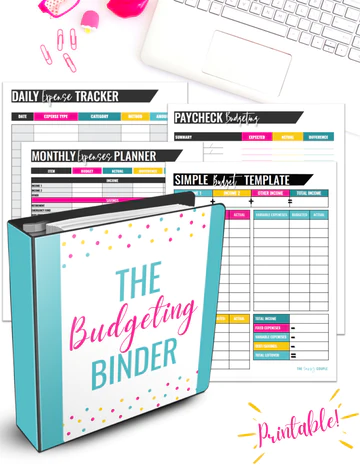
Ready to level up your financial game and stop living paycheck to paycheck? The Savvy Mama Budgeting Binder is just the tool you need!
This binder is more than just a collection of sheets – it’s a guide, a friend who will walk with you every step of your financial journey. It’s designed to help you track your income, manage your expenses, save for the future, and reach those financial goals. But that’s not all!
You can also join The Savvy Mamas Membership to receive support and advice from a whole group of mommas working on managing time and money much better. Together, we can empower each other to create a stress-free financial future.
So, why wait? Make the smart choice today. Secure your Savvy Mama Budgeting Binder and become part of a community that’s here to help you thrive. You’ve got the power to change your financial story, momma, and the Savvy Mama Budgeting Binder and Membership are here to help.
Grab yours today! 💪💰

More Money Tips for Sahms
Create More, Worry Less: 18 Simple Stay At Home Mom Budget Tips
20 Weird Ways to Save Money as a Stay-At-Home Mom
Want to Make Money From Home? Here’s How Stay at Home Moms Make Money
35 Online Mom Jobs That Actually Make Money for Stay at Home Moms!
How to be a Stay at Home Mom on One Income – and Still Survive
